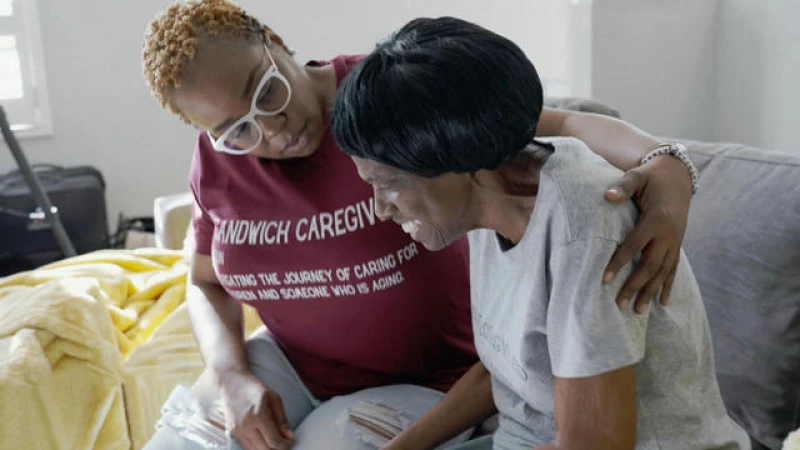Throughout the United States, an estimated 53 million individuals serve as unpaid caregivers, with many falling into the category of the "sandwich generation" — juggling the responsibilities of raising children while also looking after aging parents.
One of these caregivers is Ty Lewis, a social media influencer, who turned to her online community for support by candidly sharing her journey on Instagram as she cared for her mother, who is battling Alzheimer's disease.
"I needed community. I needed love. I needed people to be seen," expressed Lewis.
As she shared her experiences, Lewis's Instagram following flourished, with many resonating with her authenticity and openness.
Gertrude, Lewis's mother, necessitates constant care, a demanding responsibility that Lewis and her husband handle while also raising their two daughters.
"Mommy requires 24-hour care, so she cannot be by herself. She is unable to do anything, so we have to assist her, going to the bathroom, getting in the bed, dressing," shared Lewis.
"It's been very hard. We have sacrificed a lot, um, mentally, emotionally, socially, and especially financially," she continued. Medicare, a federal health insurance program mostly for people over 65, does not cover long-term care, often leaving families like Lewis' to fill in the financial gap for seniors who need care. Lewis' mom was a teacher and, despite receiving a pension and Social Security, it's still not enough to cover the costs.
Lewis revealed that last year alone, her mother's caregiving expenses reached $90,000, with only $66,000 covered by her pension, forcing the family to supplement the rest.
"You work five, six, seven jobs. You Uber. I am a literacy specialist at a school two days a week. So you hold part-time jobs and you do what you can," said Lewis.
The financial strain is widespread, with half of American adults unsure if they can afford necessary care. On average, at-home care in the U.S. costs $61,000 annually, while a private room in a nursing home nearly doubles that expense.
Nicole Jorwic, chief of advocacy and campaigns for Caring Across Generations, said the situation is "beyond a crisis point."
"It's been a rolling crisis and we're at a catastrophic point," she said.
Caring Across Generations works to change caregiving policy and support families and workers. Jorwic advocates for government action to support family caregivers, whom she notes provide $600 billion of unpaid care annually.
Despite the hardships, Lewis remains determined. When asked if she would choose another path, she said she wouldn't have it any other way.
However, she pondered, "it's that American dream ... I'll work all my life and then I'll have my retirement because I'll get to live. That's not the case."
Fast forward to February, Lewis' mother became eligible for In-Home Supportive Services (IHSS), a California initiative offering caregiving assistance. Yet, as April draws to a close, Lewis remains uncertain about the number of hours of care her mother will receive each week or when it will commence.







